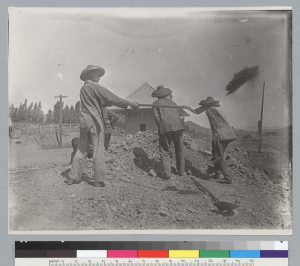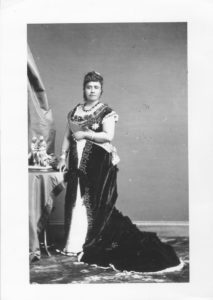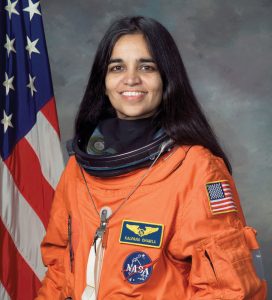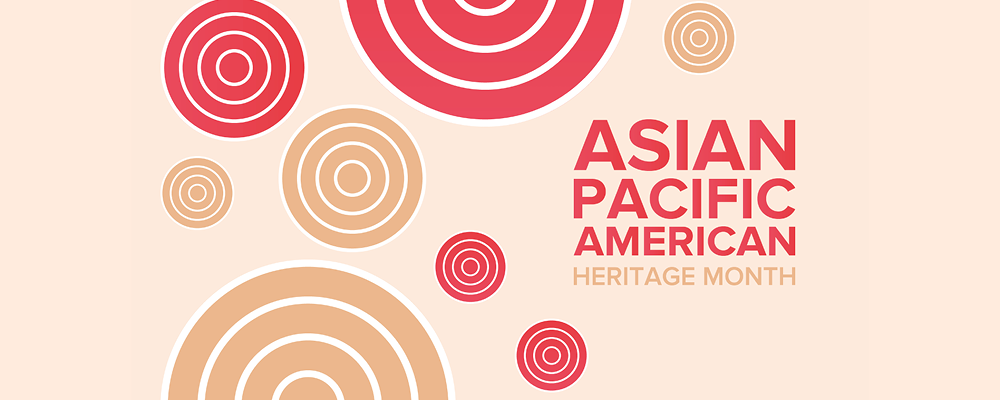Teaching about Asian Pacific American Heritage Month
Asian Pacific American Heritage Month is a great opportunity to incorporate culturally responsive teaching into students’ learning experience.
Congress designated May in 1992 as Asian Pacific American Heritage Month — a month to honor the contributions of many Asians and Pacific Islanders. They helped shape our country into what it is today.
We hope students of Asian or Pacific Islander heritage share their experiences and their cultural traditions with their peers, and teachers include the contributions of Asian and Pacific Americans to our collective history in lessons this month. People of Asian and Pacific Islander descent have been a part of United States history since its earliest days.
Here are some examples:
History

Picture from 1898, courtesy the California Historical Society
The Chinese Railroad Workers were instrumental in the construction of the Transcontinental Railroad. Mostly forgotten by history, thousands of Chinese immigrants, who came to the U.S. during the California Gold Rush, worked hard to build the country’s first transcontinental railroad.
These railroad workers faced many hardships, discrimination, low wages, disease, and hazardous work environments. Many died in the line of work. In 1867, they held a strike asking for better compensation and work conditions. Their efforts were not successful, and they were forced by railroad construction bosses to return to the same working conditions.
Work continued, and the Central Pacific and Union Pacific railroad lines were joined May 10, 1869 in Promontory Summit, Utah, marking the completion of the country’s first transcontinental railroad.
Anna May Wong was the first Hollywood and international Chinese American movie star. She had many roles in the early 1920s but grew frustrated with limited roles and typecasting in movies at the time. She moved to Europe and enjoyed a successful European film career throughout the 1920s.
When she returned to America, Wong used her international fame as a platform to speak against Hollywood stereotypes and racism, according to womenshistory.org. She helped pave the way for other actresses of color in the future.
Politics

Liliuokalani (born Lydia Liliu Loloku Walania Kamakaeha) between 1876 and 1883 Courtesy AA Montano public domain
Queen Liliuokalani was Hawaii’s first female monarch, and came to the throne after the death of her older brother, King Kalakaua, in 1891. Unfortunately, she was also Hawaii’s last sovereign ruler.
A coup backed by the US government and conducted by Sanford Dole resulted in Queen Liliuokalani’s deposal, according to smithsonianmag.com. She led a revolt that attempted to return power to the monarchy and native Hawaiians, but it failed, and she was forced to abdicate her rule.
Before her death in 1917, she penned multiple songs — the most famous being “Aloha Oe (Farewell To Thee).” Some say this was a farewell to the Hawaii she once knew. One of her most significant contributions to her people was to establish schools for Hawaiian children, according to biography.com.
Dalip Singh Saud was the first Asian, Indian, and Sikh to serve in Congress as a U.S. Representative in 1957, according to history.house.gov. He was born in India and became a naturalized American citizen in 1949. He had previously advocated and organized efforts that would allow people of Indian descent to become naturalized American citizens.
Saun also wrote the book My Mother India, where he criticized British imperialism in India and narrated his experiences at his homeland.
Patsy Takemoto Mink was the first woman of color and first Asian American woman elected to Congress in 1964, according to history.house.gov. The third-generation Japanese American congresswoman was a trailblazer who advocated for women’s rights, civil rights, education, and social justice.
Mink co-authored and sponsored Title IX, a civil rights law that provides equal opportunity and protects people from gender discrimination in education, according to womenofthehall.org. She also championed the Early Childhood Education Act and the Women’s Educational Equity Act. Mink was the first Asian American to run for U.S. President.
Daniel Inouye was the first Asian American to be elected to the U.S. Senate, according to history.house.gov. He was also Hawaii’s first representative after it became a state in 1959.
Inouye served in the U.S. Army’s 442nd Regimental Combat Team, a group of soldiers of Japanese ancestry, during World War II. He lost his right arm in the war. Inouye’s awards for his service include the Congressional Medal of Honor, the Distinguished Service Cross, the Bronze Star, and the Purple Heart with Cluster.
In 2013, Senator Inouye was awarded posthumously with the Presidential Medal of Freedom by President Barack Obama.
Civil Rights
Yuri Kochiyama was a civil rights activist who founded Asian Americans for Action in her fight for racial justice. Her belief that “[r]acism has placed all ethnic peoples in similar positions of oppression, poverty and marginalization” led her to fight for equal rights of other groups, including African Americans, Latinos, and Native Americans, among others.
She advocated for the redress and reparations of Japanese Americans who were forced to go to concentration camps, according to npr.org.
Fred Korematsu was a civil rights hero who fought against Japanese concentration camps in the US, according to korematsuinstitute.org. He was arrested after he defied U.S. government orders to go to an internment camp, as they were called then, saying it was unconstitutional. In 1944, the U.S. Supreme Court ruled against him in Korematsu v. United States.
The case was reopened and overturned in 1984, scoring a victory for the civil rights movement. Korematsu received the Presidential Medal of Freedom in 1988 from President Bill Clinton, and in 2010, the state of California declared January 30 as Fred Korematsu Day.
Dr. Feng Shan saved thousands of Jews from the Holocaust, according to jewishvirtuallibrary.org. A Chinese diplomat, Shan served as the Chinese consul in Vienna during World War II. Defying his superiors’ orders, Shan issued thousands of visas to Jews who sought to escape German-occupied Austria, saving thousands of lives in the process.
Decades before Brown v. Board of Education, Joseph and Mary Tape fought for their daughter’s right to equitable public education, according to history.com. The Tapes tried to enroll their oldest daughter, Mamie Tape, in a local school in San Francisco in the 1880s, but were denied because the Tapes were Chinese American.
The Tapes sued the city’s board of education. Their case, Tape v. Hurley, argued that a California law that passed in 1880 gave all children the right to a public education. The California State Supreme Court ruled in their favor in 1885. In response, the San Francisco school board established a separate but equal policy that segregated Chinese and white children.
A couple of years later the Tapes moved to Berkeley where their children attended desegregated schools.
Science

Courtesy Getty images
Kalpana Chawla was the first Indian-born woman to go to space, according to space.com. In 1997 she was part of the Columbia crew on flight STS-87 and orbited the Earth 252 times in two weeks. In her first mission, she said, “When you look at the stars and the galaxy, you feel that you are not just from any particular piece of land, but from the solar system.”
Later in 2003, she returned to space on a 16-day mission aboard the Columbia in flight STS-107. Sadly, the Columbia space shuttle malfunctioned upon reentry to Earth, killing the entire crew.
Dr. Chien-Shiung Wu was a physicist who was known as the Chinese Marie Curie and the First Lady of Physics, according to nps.gov. She worked on the Manhattan Project and helped the U.S. develop the atomic bomb during World War II.
Her physics experiments disproved the Law of Conservation of Parity and proved Tsung Dao Lee’s and Chen Ning Yang’s theory on particle physics, according to scientificwomen.net. Wu’s colleagues, Lee and Yang, earned the Nobel Prize in Physics for this accomplishment in 1957. She was not recognized for her contributions because she was a woman.
Wu was the first woman to become president of the American Physical Society. Despite the challenges she faced with sexism in her field, she earned several awards, including the Comstock Prize and the National Medal of Science, according to nsf.gov.
Business
Toni Ko is a successful entrepreneur who was named one of Forbes’ Richest Self Made Women, according to womenshistory.org. A first-generation Korean American, Ko started her business in the beauty industry at age 25 and founded NYX Cosmetics. After selling her business in 2014 for $500 million, she has launched new companies and invested many women-owned businesses.
In 2016, Ko was honored by the National Women’s History Museum for success and leadership in business.
Jerry Yang is a Taiwanese American computer programmer who founded Yahoo! Inc, according to ilctr.org. He was CEO and “Chief Yahoo” until his departure in 2012. His entrepreneurial spirit led him to create AME Cloud Ventures, where he currently mentors and invests in technology startups.
The men and women listed here are just a few of the many Asian and Pacific Americans who created this country and continue to shape it today. For further reading, visit jacl.org, the National Women’s History Museum, or the Asian Pacific American Institute for Congressional Studies.
Start a 60 day FREE trial for Studies Weekly Online to gain access to K-6 social studies curriculum, primary source videos, and more.
